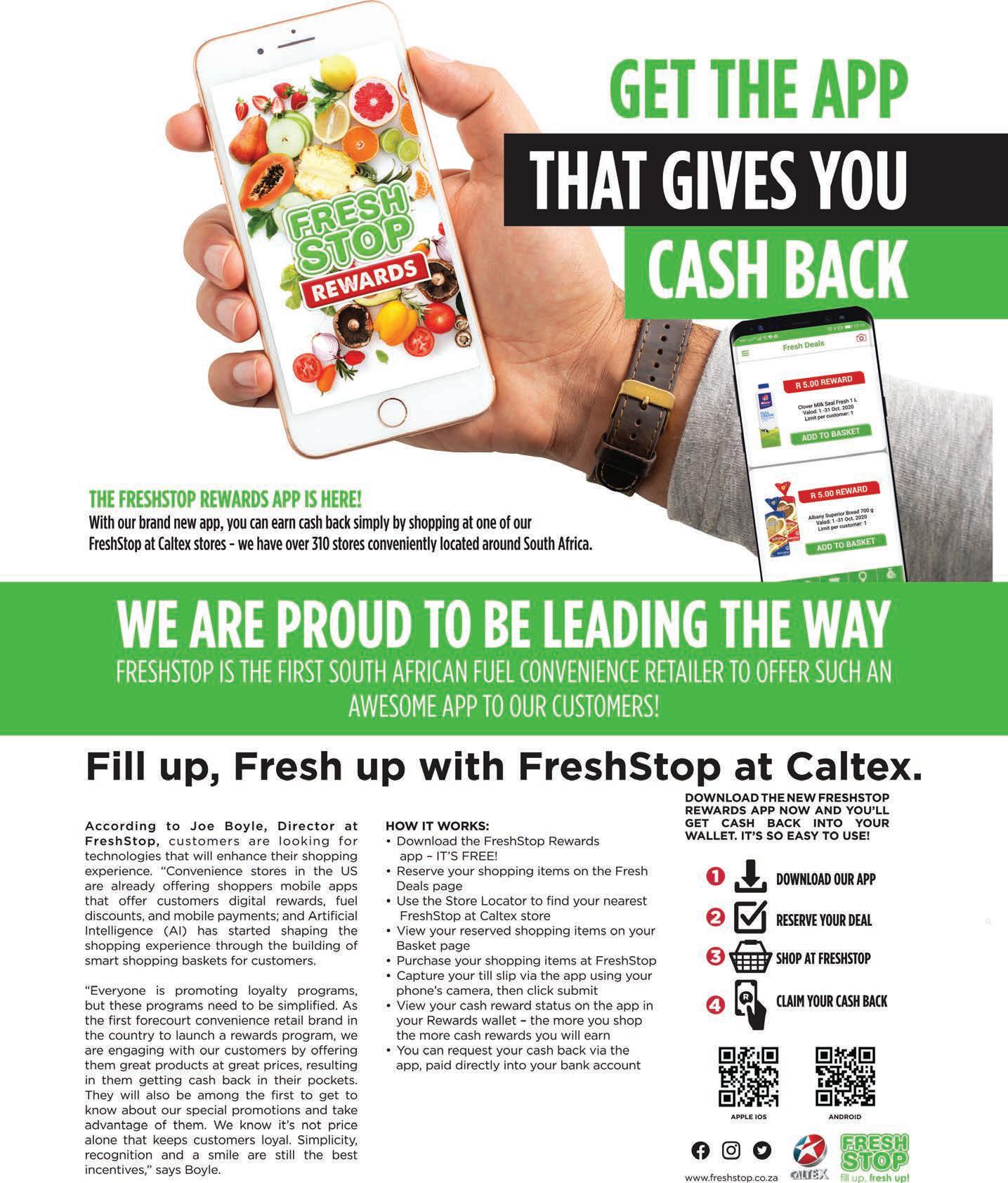
4 minute read
Consumer behaviour

LOYALTY PROGRAMMES AND SPENDING HABITS


LISA WITEPSKI reports on how much impact loyalty programmes really have on purchasing decisions

Loyalty undoubtedly has a positive effect on consumer spend. But should programme owners be looking for their members to make more frequent purchases, or is it volume that counts? And how can they achieve the desired results?
According to a white paper by Genex Insights, Gartner research shows that just 20 per cent of a company’s customer base can be counted on to generate 80 per cent of its revenues. Small wonder, then, that companies are eager to fi nd avenues for mining loyalty.
This is borne out by an observation by Brett White, CEO of Zapper: “South Africa’s 2 000-odd malls and thousands of entertainment venues were already battling a sluggish economy before the pandemic hit. Ensuring a strong comeback must be top of mind for venue owners, property managers and property investment funds across the country.”
Loyalty programmes defi nitely have a role to play here, he maintains, pointing to spending patterns during the coronavirus pandemic as evidence. Although the overall basket size shrank during lockdown, merchants with a loyalty card experienced only a small decline, he reveals. Some even saw a positive impact.
TARGETTED PROGRAMMES
Rioma Cominelli of First Loyalty Plus isn’t surprised. She explains that although consumer spend doesn’t necessarily increase when a loyalty programme is in place, programmes almost always lead to an increase in the
frequency of spend. But the benefi ts of the programme go beyond this, helping the merchant to capture information that can be used to deepen their understanding of the consumer. This, in turn, can be used to create promotions that target consumers more precisely.
For example, says Cominelli, a restaurant might learn that its patrons are particularly price sensitive. In this case, it will tailor its loyalty programme to push more frequent visits. On the other hand, if price is not an issue, the programme may be designed to encourage greater usage. “Unlike price-sensitive customers who use the rewards so that they can visit the restaurant, these customers may be encouraged to spend more by the offer of discounts on certain meals,” she says.
Simplicity drives use
She adds that the programmes which attract the greatest spend are those which are straightforward and easy to use – simply because no-one wants to engage with a programme they can’t understand. But it’s also equally important for the programme to offer the customer real value: if the offering is unrelated to something that the customer wants According to Rioma Cominelli of First Loyalty Plus, it’s safe to say that South African consumers have saved “many millions” through loyalty programmes – although it’s diffi cult to provide a precise fi gure, not least because many loyalty programmes won’t release this information. “Suffi ce to say that with 72 per cent of South Africans belonging to at least one loyalty programme, a lot of money is being saved.”
or needs, there’s no reason for them to use it. “In other words, they should target experiences that are already a part of the customer’s life, like going to the movies or eating at a restaurant,” Cominelli says.
That said, programmes that revolve around an experience people would like to have are just as successful. Cominelli indicates that this aspirational element is critical. She gives the example of overseas travel: “People get excited about being able to save on something they really want, like a trip to Las Vegas. They’ll buy into a programme specifi cally because it makes it possible for them to afford something they otherwise could only dream of. But, again, it is essential that this is tagged onto daily usage. A programme linked to a product or service that is used infrequently is pointless.”
Added to this, there must be an emotional component which ties everything together.
After all, Cominelli concludes, customers must enjoy using the programme – otherwise those loyalty cards will sit, forgotten, in their wallets.
Rioma Cominelli of First Loyalty Plus reports that the biggest savings are in sectors related to lifestyle, such as travel and hospitality, especially restaurants and hotels. “Sectors that are purely functional, such as insurance, aren’t quite as alluring. People want to feel good about their lives; they like a little glamour.”












